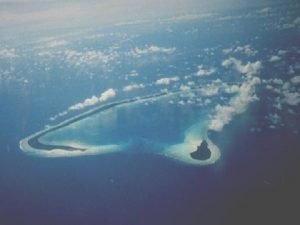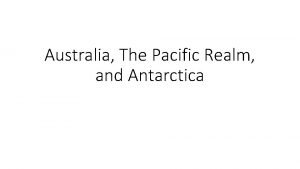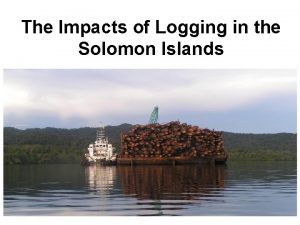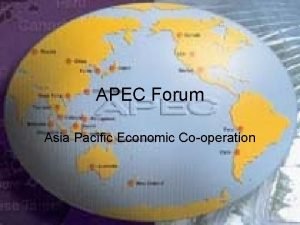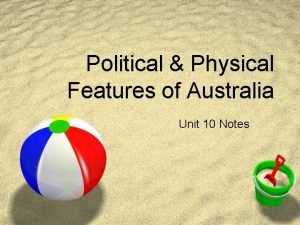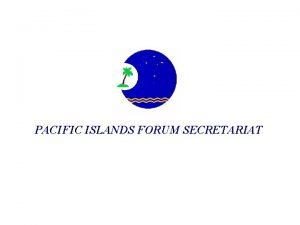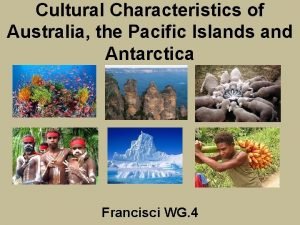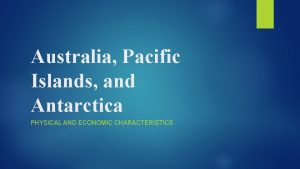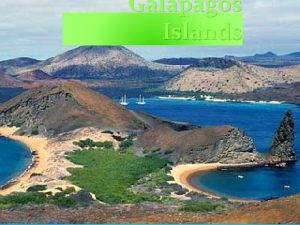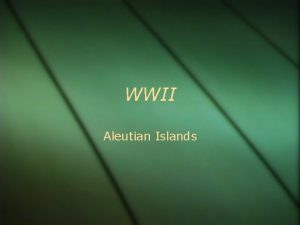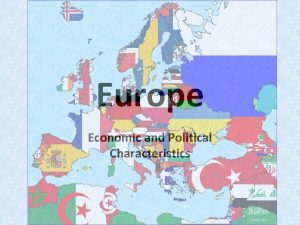Economic Political Characteristics of Australia the Pacific Islands









- Slides: 9

Economic & Political Characteristics of Australia, the Pacific Islands and Antarctica Francisci WG. 4

Isolation • Australia, the Pacific Islands and Antarctica are isolated from the rest of the world. – Air and water travel are essential to bring goods and services to these regions. – The interior of Australia (called the outback) depends heavily on air travel.

Economic Activities • Australia’s first major industry was agriculture. • Only a small percentage of land is available for farming. • The dry and semi-dry (steppe) areas of Australia are well suited for cattle and sheep ranching. • Ranching and mining are very important (primary) economic activities in Australia and New Zealand. • One of the world’s top producers of wheat and beef.

Mineral Resources • In 1851, the discovery of gold did much to increase the Australian population and improve the economy. • Other minerals found: Coal, diamonds, iron ore, nickel, lead, uranium and zinc.

Environmental Balance • Both Australia and New Zealand have unique species found in these areas only (kangaroo, koala). – The introduction of nonnative species of plants and animals into the ecosystem has upset the environmental balance in both countries. – For example, the existence of a non-native rabbit in Australia can disrupt the food chain.

Communication Systems • Australia is centered in the Asia-Pacific region and has developed strong financial and communication systems (tertiary activities). – Communication systems have expanded to enable Australia, the Pacific Islands and Antarctica to better communicate with the world.

Antarctica Treaty • Antarctica is Earth's only continent without a native human population. • The Antarctica Treaty was created in 1959 by twelve countries whose scientists had been active in and around Antarctica. – Antarctica would be used for peaceful purposes only; no building of military bases. – Countries must share scientific info with each other. – No nuclear testing or disposal of radioactive wastes.

Hole in the Ozone Layer • In 1985, a hole was found in the ozone layer over Antarctica. • Scientists fear UV radiation will change the ecological system in Antarctica (affect the food chain). • Sunburn, skin cancer, cataracts, damage to plants, and reduction of plankton populations are concerns that have plagued Antarctica.

Scientific Studies • Meteorologists: Study atmosphere and weather conditions • Geologists: Study land structures of Antarctica • Biologists: Study responses of animals • Paleontologists: Study fossils (dinosaurs, wooly mammoth) • Physicists: Study auroras, cosmic rays and radio waves
